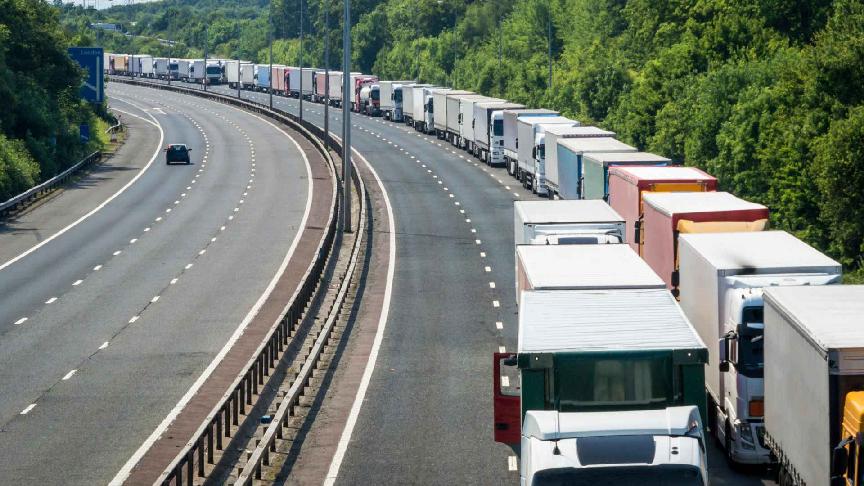Hapag-Lloyd CEO Rolf Habben Jansen, industry analyst Lars Jensen, and CEO of Nanooq Management Consultancy Bjorn Vang Jensen discussed the current situation and challenges facing containerised shipping in a recent online panel discussion. Below are the main highlights of their meeting, which took place on Monday, 19 August 2024.
Red Sea shipping crisis
When asked about their perspective of the current events in the Red Sea, Lars Jensen emphasised that the situation remains unchanged, with no short-term solution in sight. He also anticipates that this unpredictability will persist until next year.
Speaking from the shippers' perspective, Bjorn Vang Jensen notes that supply chains have adjusted to the "new normal", but the crisis continues to impact them.
For Hapag-Lloyd, the key impacts of avoiding the Red Sea and the Suez Canal are evident. Rolf Habben Jansen said that the situation required more ships to be deployed. While supply chains have adapted, uncertainty looms, and the company plans for the situation to persist until year-end.
Concerning cost-related challenges, the carrier's CEO highlighted the increased bunker costs due to longer and faster voyages, higher time charter rates, and equipment shortages caused by extended journeys.
Jansen said returning to the Red Sea would require high safety for seafarers, emphasising that Hapag-Lloyd has been avoiding the Suez route to avoid risking seafarers' lives.
Growing boxship orderbook
The discussion touched upon the still-growing orderbook of new container vessels.
Lars Jensen believes the orderbook will not cause a level of overcapacity in the future, especially since many older ships were pressed into service during COVID-19, and these will need to be scrapped soon.
In addition, carriers actively seek more ships that comply with decarbonisation requirements. This push toward sustainability is driving demand for newer vessels. He added that the new vessels are only expected to enter the market in 2027 and 2028.
Gemini Cooperation reliability promise
Regarding the Gemini Alliance, Bjorn Vang Jensen acknowledged that transhipment isn’t the preferred choice for shippers. But if the Maersk-Hapag-Lloyd cooperation manages to achieve high levels of schedule reliability, it could be a "game changer".
He, however, emphasised that the alliance needed to achieve early success in order to win shippers over.
Lars Jensen sees promise in achieving higher reliability rates through the carriers’ proposed model. He further believes that other carriers may follow suit once they acknowledge the success of the Gemini model.
Risks of strikes in Canada and the US East and Gulf coasts
As the risk of two major strikes in North America draws nearer, namely the rail strikes in Canada and the port strikes in the East and Gulf coasts of the US, the panellists weighed the consequences of these events.
Bjorn Vang Jensen described the potential danger of a strike on the East Coast as "a real one." However, he believes the US government will seek a resolution to mitigate the potential impact on ports.
Lars Jensen, on the other hand, is more pessimistic. He raised concerns that the US political elections could outweigh anything at that time despite a likely political intervention.
Rolf Habben Jansen sees that the chances for the strike have grown higher in the US. He added that the strikes in Canada could lead to weeks of container movement delays by rail the longer the strike remains.
Not moving cargo for a week would take carriers a long time to catch up and clear the backlog. However, given the intervention by the Canadian government, he hopes the strike will not last long.
The scenario of a Suez Canal return
One critical concern is the potential congestion that could occur when the Suez Canal becomes accessible again. The panellists predict a surge of carriers eager to resume their routes through the Canal, leading to high congestion levels at European ports.
Lars Jensen warns that during the initial weeks after the Canal reopens, European ports may face double the workload. There will be twice the number of ships, twice the cargo to handle, and even double the truck traffic.
Jensen describes this as a “congestion nightmare” and highlights that carriers will need time to adjust.
Hapag Lloyd CEO, in agreement with Jensen, emphasises the need for flexibility.
He suggests that some backhaul journeys may continue to circumvent Africa to manage port congestion. This could involve calling ports that are not typically part of the usual routes.
Such potential changes would help prevent clogging up the main maritime gateways.
Shippers need a contingency plan
Since returning to the Red Sea is more likely to happen unexpectedly and on short notice, shippers are advised to have a robust contingency plan to help them "ride the storm better."
Two options Bjorn Vang Jensen highlighted for shippers are expanding the network of suppliers and carriers and adding inventory.
Similarly, Hapag-Lloyd's CEO advised shippers to think ahead and not put "all eggs in one basket." This would increase a shipper's likelihood of overcoming the challenges of 2025.







